
Manitoba Hydro Projects
Keeyask Generation ProjectView Manitoba Hydro's webpage for Keeyask Generating Station project The Keeyask Generating Station would produce an average of 4,400 gigawatt hours of electricity each year and would be located about 725 km northeast of Winnipeg, where Gull Lake flows into Stevens Lake - about 35 km upstream of the existing Kettle Generating Station. Stevens Lake is a reservoir already for dams. Keeyask would be Manitoba's fourth largest generating station. It would result in flooding of approximately 46 square kilometers of boreal taiga lands, and this area may gradually increase as a result of erosion. The earliest potential in service date for the project is 2017 and the earliest date that construction is likely to begin is 2012.
View Manitoba Hydro maps of proposed Keeyask Generating Station: Overview Map & Close-up Map Unfortunately the Manitoba government continues to issue licences for Hydro projects before Aboriginal Consultations are finished. This is one obvious concern regarding the licence. Manitoba Wildlands continues to be concerned about the numerous commitments Manitoba Hydro made during the Keeyask hearings which are not all reflected in the licence. In face updated, supplements and changes to the Environmental Impact Statements (EIS) were happening during a period of a year, including during the hearings. Despite this the licence introduction indicates it is based on the EIS and the CEC report post hearings. Steps are needed urgently to make sure that any commitment, or change made through public materials, under oath during hearings, etc are included in what the Minister has available to him when making decisions about a class three licence. View January 26, 2015 Manitoba Wildlands letter Manitoba Wildlands filed an appeal of the Keeyask Licence for the November 1, 2014 deadline.The extensive and lengthy licence is combined with a letter from Minister Mackintosh directly Manitoba Hydro to take the steps necessary for reconciliation with Aboriginal communities in Manitoba affected by Manitoba Hydro projects. Despite lengthy environmental compliance requirements for the project in the licence, many of which are based on Clean Environment Commission recommendations, the licence does not give confidence about how compliance will be enforced. Sections of the licence stipulate that future regulations, and Manitoba law during the one hundred year life of the project, must also be enforced. Other sections have this requirement left out. The licence section about access to information, and monitoring reports, transparency on decisions made regarding the lands and waters in the Keeyask region, is weaker than commitments made by Manitoba Hydro and the Keeyask Partners during CEC hearings. Overall, many commitments made by the proponent during the hearings are absent from the licence. It is Manitoba Wildlands’ position that any steps agreed to by the Proponent when under oath during a public hearing are relevant in the decisions about content of an environmental licence. View July 30, 2014 Manitoba Wildlands letter  Manitoba Wildlands was a participant in the Clean Environment Commission proceedings and hearings for the Keeyask Generation Station. These started in April 2013, with the hearings start in September, and continued through to one week in January 2014. Pre conferences, motions hearing, two sets of formal Information Requests to Manitoba Hydro, and eight weeks of hearings are all part of the proceedings and hearings. The CEC also toured communities in northern Manitoba in fall 2013.
Manitoba Wildlands was a participant in the Clean Environment Commission proceedings and hearings for the Keeyask Generation Station. These started in April 2013, with the hearings start in September, and continued through to one week in January 2014. Pre conferences, motions hearing, two sets of formal Information Requests to Manitoba Hydro, and eight weeks of hearings are all part of the proceedings and hearings. The CEC also toured communities in northern Manitoba in fall 2013. Manitoba Wildlands filed Information Requests, reviewed the Environmental Impact Station for the generation station, cross-examined both the Keeyask Hydro Limited Partnership community representatives and Manitoba Hydro experts. Participants were also able to cross examine each other’s expert witnesses. We are providing short summaries of the contribution Manitoba Wildlands experts provided to the CEC, and link to their reports and hearing presentations below. Manitoba Wildlands experts included:
Manitoba Wildlands prepared a series of reports, and charts regarding the Keeyask Generation Station project, and the materials provided by Manitoba Hydro for the CEC hearings. Certain of these reports and products reflect issues with the environmental filings from the proponent, while others reflect specific issues identified during the CEC hearings. The objective is to provide analysis, and information that boosts or improves on the proponent's information, in order to support decision making about the Keeyask Generation Station. We are listing and linking here a some of our Keeyask reports and charts.
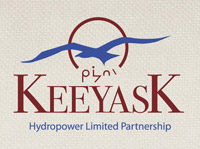 Clean Environment Commission hearings for the Manitoba Hydro Keeyask Generation Station project ended Thursday, January 9, 2014, after 4 weeks of northern tour, and 8 weeks of Winnipeg hearings.
Clean Environment Commission hearings for the Manitoba Hydro Keeyask Generation Station project ended Thursday, January 9, 2014, after 4 weeks of northern tour, and 8 weeks of Winnipeg hearings.Participants in the proceedings and hearings provided closing statements through the week. Most advised the CEC Panel that they could not recommend a licence for the generation station. Reasons varied, but included gaps in method, gaps in data, and the need for the public utility to update its standards, share information, and be open to advice. Legal counsel for Pimicikamak pointed to discrepancies in environmental assessment, and cumulative environmental assessment content in environmental statements for the project. They also identified the artificial limitation on the boundaries of study areas, and impact zones identified by the utility. Legal counsel for Peguis First Nation identified the omission of traditional users, and rights holders in the Keeyask region from all information, presentations, and content – other than the four Keeyask Cree Nation partners. Legal counsel for Consumers Association of Canada, Manitoba division, pointed to the pattern of recommendations from the CEC regarding hydro projects that have not been fulfilled since 2004, and that need urgent action. They also identified concrete reasons why they could not recommend a licence for this project, in the midst of a highly disturbed ecosystem and river system, without a range of changes in analysis and verifiable science. Monitoring over the life of the generation station (100 years), and independent scientific advice and reviews were themes from multiple participants in their closing statements. While the week progressed Manitoba Hydro decided to indicate that the Conawapa Generation Station project would be going to the Hydro board in March, and that the training program for Conawapa would upgrade those working on Keeyask also. The utility also indicated their plan on how to conduct the Regional Cumulative Effects Assessment (RCEA) for the hydro region in northern Manitoba was with the minister, and they expected to finish the work in 2014. The assessment was recommended by the CEC, and endorsed by Minister Makintosh with direction to the utility after Bipole III. Participants' response to this timeline for the RCEA was consistent: The RCEA needs to be independent from the utility, with its cooperation, so as to avoid self assessment, and the same experts used for most Hydro projects. To the surprise of the CEC and participants, Manitoba Hydro also indicated the general contract to build Keeyask has been awarded. The CEC report regarding the Keeyask Generation Project has to be in the hands of the Minister within 120 days of the end of hearings. View January 8, 2014 Manitoba Wildlands closing statements On December 20, 2013 the Manitoba Clean Environment Commission (CEC) sent Manitoba Hydro and its co-proponents for the Keeyask Generation Station 55 questions to answer in writing for January 3, 2014. This unprecedented move by the CEC results from the challenges in arriving at answers to certain questions about the Keeyask project during reviews of environmental statements, and the CEC proceedings and hearings, including formal Information Requests which the CEC and participants filed.
On December 20, 2013 the Manitoba Clean Environment Commission (CEC) sent Manitoba Hydro and its co-proponents for the Keeyask Generation Station 55 questions to answer in writing for January 3, 2014. This unprecedented move by the CEC results from the challenges in arriving at answers to certain questions about the Keeyask project during reviews of environmental statements, and the CEC proceedings and hearings, including formal Information Requests which the CEC and participants filed.The week of January 6 is scheduled as the last week of the CEC hearings regarding the Keeyask Genertion project, which included a three week extension. The final week includes some cross examination of returning experts, presentation of the answers to the set of 55 CEC questions, further questions from the CEC panel, and then closing arguments from the proponent, and the participants. Thursday, January 9 is the final day of the hearings. Notable issues arising during the CEC proceedings and hearings include:
The CEC will issue its recommendations regarding licensing in its report, due 120 days after the end of their Keeyask hearings. In the meantime the Public Utilities Board hearings regarding Manitoba Hydro's development plan start in March 2014. The CEC will be starting its mandated review of Lake Winnipeg Regulation in early 2014 also. View Manitoba Clean Environment Commission Hearings pageView December 20, 2013 Manitoba Clean Environment Commission Keeyask Hearing Questions View Manitoba Hydro responses to Manitoba Clean Environment Commission Keeyask Hearing Questions  The Clean Environment Commission (CEC), the agency that manages environmental licensing hearings in Manitoba, has decided that hearings for the Manitoba Hydro Keeyask Generation Station will be held over into January 2014. This is the second extension of the hearings.
The Clean Environment Commission (CEC), the agency that manages environmental licensing hearings in Manitoba, has decided that hearings for the Manitoba Hydro Keeyask Generation Station will be held over into January 2014. This is the second extension of the hearings. A tour of northern Manitoba communities impacted by Hydro projects was conducted in late September, and early October. Then hearings in Winnipeg began October 21. The panels of Hydro experts have almost finished their presentations. Cross-examination from participants and the Commission follow each panel's presentations. Some but not all participants have legal counsel. Panels are based on the volumes and topics in the Environmental Impact Statements and supplementary filings for the project, under Manitoba's Environment Act. Starting November 12 participants will bring in their independent expert witnesses, especially in areas such as woodland caribou, sustainability, cumulative assessment, water quality, mercury poisoning, and flooding from Manitoba's hydro system. These witnesses and experts will be informing the CEC for about 4 weeks. Four northern First Nations are partners in the Keeyask Generation project, and they have participated in panels with Manitoba Hydro. The four have also presented their environmental evaluations of the project. Other affected First Nations are among hearing participants. Questions about the history of the Nelson River region, the right to exercise aboriginal and treaty rights in the region, and which other First Nations will be affected by Keeyask are being asked in the hearings. CEC hearings are open to the public, and being held at the Hotel Fort Garry in downtown Winnipeg. Manitoba Wildlands posts a daily summary during the hearings on its fb wall. Other products are being developed during the hearings, including a CEC Chart of all Keeyask Generation documents, events, decisions, etc. Watch the brag box on the ManitobaWildlands.org news page for posts. There are other Keeyask projects, including the Keeyask Transmission project and the Keeyask Infrastructure project, licensed earlier. The Radisson converter station will be updated in order to move energy from this possible generation station along Bipole 1 & 2 to the Dorsey converter station in Winnipeg. View Manitoba Wildlands Keeyask Chronology ChartView Keeyask Hydropower Limited Partnership website View Manitoba Clean Environment Commission Hearings page The Manitoba Clean Environment Commission (CEC) report concerning the Bipole III hearings included a wide range of recommendations, which have now been confirmed by the Minister of Conservation and Water Stewardship. The Minister has informed the utility that all the non regulatory recommendations in the CEC report will also be fulfilled, and informed the utility this includes the cumulative effects assessment of the hydro system. Certain of these recommendations are repeats from the CEC report regarding the Wuskwatim projects as provided to cabinet in 2004 and made public in 2005. In particular the CEC has again recommended that a regional cumulative effects assessment " for all Manitoba Projects and associated infrastructure in the Nelson River sub watershed" be undertaken "prior to the licensing of any additional projects..." Recommendation # 13.2 identifies what has not happened, despite 45 years of projects being build, waterways being altered, and effects continuing and multiplying. CEC reports are posted on the commission's website. Two Keeyask CEC participants filed notices of motion with the CEC September 10 requesting the CEC delay its Keeyask hearings. The formal motions will support the need for a cumulative effects assessment being conducted. The cumulative assessment of Manitoba's Hydro system should be conducted by independent technicians and experts. Peguis First Nation and Pimacikamak both filed notices with affidavits. The CEC will hold a motions hearing concerning the matter on October 17, 2013, in Winnipeg. At that time the full motion will be available, and argued in the hearing. All CEC proceedings are open to the public and the media.Manitoba Wildlands is posting the two motions. The CEC has not made them public. The proceedings for CEC proceedings and public hearings about the Keeyask Generation Station began April 11, 2013 in Winnipeg with a pre hearing conference of participants. Manitoba Wildlands is a funded participant in the proceedings and hearings.We will be providing coverage over the next 8 months, as the hearings are likely to be in October and November 2013. Manitoba Wildlands will be keeping a chart of events, documents, decisions - similar to our Bipole III CEC Chart. Please note that Keeyask is also being reviewed under the Canadian Environmental Assessment (CEAA) Act, 1992. The chart, therefore, includes CEAA documents, and assessment steps. Manitoba Hydro Keeyask Generation & Transmission Projects Chronology Chart The comments highlighted the Keeyask Projects as one of Manitoba's worst examples of staged licensing: Keeyask is being licensed as at least three separate projects (Infrastructure, Generation, and Transmission), plus an unknown number of related projects (such as road upgrades and converter station upgrades). The comments also identified a lack clear information/standards for transmission projects in Manitoba. Contrary to common public perception, and statements made by Manitoba politicians, Keeyask power will flow down Bipole I not Bipole III. 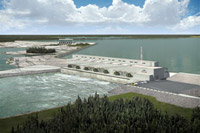 Canadian Environmental Assessment Agency (CEAA) invites public comments on the potential environmental effects of the Keeyask Generation Project and the proposed measures to prevent or mitigate those effects. Written comments are due by December 21, 2012.
Canadian Environmental Assessment Agency (CEAA) invites public comments on the potential environmental effects of the Keeyask Generation Project and the proposed measures to prevent or mitigate those effects. Written comments are due by December 21, 2012.Following this comment period, CEAA will prepare the Comprehensive Study Report, setting out its conclusions on the environmental effects, the proposed mitigation measures and the significance of any remaining adverse environmental effects. A public comment period on the Comprehensive Study Report will be announced at a later date. The proposed Keeyask Generation Project, is a $5.6 billion 695-megawatt hydroelectric dam, slated for development by Keeyask Hydro Power Limited Partnership (between Manitoba Hydro and four nearby Manitoba First Nations) on the Nelson River at Gull Rapids near Gillam, Manitoba. Modern dams in Manitoba require at least three licenses. Two licenses from the Manitoba government: a Water Power Act license, and an Environment Act License; plus a federal permit under the Canadian Environmental Assessment Act (CEAA). The federal environmental assessment also considers a proposal by Manitoba Hydro for a 22 kilometre transmission line to provide construction power to the Keeyask Generation Project and three 35 kilometre long transmission lines within a single corridor to transmit electricity from the Keeyask Generation Project to the existing Radisson Converter Station near Gillam, Manitoba. Unlike CEAA, the Manitoba Government Environmental Approvals Branch is attempting to license the Keeyask Infrastructure, Keeyask Generation, and Keeyask Transmission projects separately. View November 21, 2012 Canadian Environmental Assessment Agency (CEAA) Public NoticeView Canadian Environmental Assessment Agency (CEAA), Keeyask Generating Station Reference Number 11-03-64144 View Keeyask Hydro Power Limited Partnership website Source: Canadian Environmental Assessment Agency
 Manitoba Wildlands submitted comments on the proposed Keeyask Generation project to Manitoba Conservation & Water Stewardship Minister Gord Mackintosh and Director of Environmental Approvals Tracey Braun September 24, 2012.
Manitoba Wildlands submitted comments on the proposed Keeyask Generation project to Manitoba Conservation & Water Stewardship Minister Gord Mackintosh and Director of Environmental Approvals Tracey Braun September 24, 2012.Manitoba Wildlands highlighted:
The proposed 695 megawatt ~$6 billion Keeyask Generating station located on the Nelson River near Gillam, Manitoba, would require Water Power Act and Environment Act licenses from Manitoba. It will also require federal license and permit approvals from Canadian Environmental Assessment Agency (CEAA). The previous Canadian Environmental Assessment Act will apply, as the Keeyask project was proposed before the Canadian Government completely replaced the Canadian Environmental Assessment Act through the Omnibus Budget Bill passed June 2012. Keeyask is the next project in Manitoba Hydro's plan to build ~$20 billion in new hydro developments over the next decade. Other hydro developments include: the Bipole III transmission corridor that is presently undergoing Clean Environment Commission (CEC) hearings, and the proposed Conawapa generating station. The Keeyask generating station will also be subject to Clean Environment Commission hearings, although none have been announced yet. View Manitoba Wildlands September 24, 2012 Comments Keeyask Generation Project - Environmental Impact Statement - Public Registry #5550.00 (PDF)View Manitoba Conservation Online Public Registry, Manitoba Hydro - Keeyask Generation Project - #5550.00 View Manitoba Wildlands, Hydro Development: Keeyask Environmental Review Process page View Canadian Environmental Assessment Agency, Online Public Registry - #11-03-64144 View July 2012 Keeyask Environmental Impact Statement View Manitoba Wildlands February 3, 2012 comments to Manitoba Conservation on draft Keeyask Scoping Document (PDF) (PDF) View Manitoba Wildlands January 31 comments to Canadian Environmental Assessment Agency on Keeyask Background Information Document (PDF) 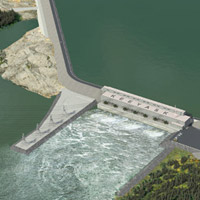 In mid-July 2012 the Government of Manitoba announced that the Keeyask hydroelectric generating station Environmental Impact Statement (EIS) had been filed.
In mid-July 2012 the Government of Manitoba announced that the Keeyask hydroelectric generating station Environmental Impact Statement (EIS) had been filed.Comments on the Water Power Act license are dues August 31, 2012 and comments on the Environment Act license are due September 20, 2012. Modern hydroelectric dams in Manitoba require at least three licenses, as well as additional permits:
Paper copies of the Environmental Impact Statement (EIS) for the Keeyask Hydro electric generation station, as required under the Manitoba Environment Act, were only submitted to Public Registries across Manitoba in late August. The public and the technical review committee therefore have had less than a month to comments on 13 volumes of technical information numbering thousands of pages. "Under these conditions there is no way for a proper review to be conducted. The deadline must be extended," said Manitoba Wildlands Director Gaile Whelan Enns. Water Power Act LicenseIt is also unclear why comments on the Water Power Act license are due so soon, when a Water Power Act license is not likely be issued until after an Environment Act license, which also follows public hearings. "If the Water Power Act license will only be issued after an Environment Act license, which would come after public hearings that may occur a year or more from now, then comments on the Water Power Act license application should open after an Environment Act license is issued," said Manitoba Wildlands Director Gaile Whelan Enns. Needs For And Alternative To (NFAAT)The Government of Manitoba also announced in January of 2011 that in addition to licensing requirements mentioned above "it is the provincial government's intention to assign responsibility to an independent body for carrying out a NFAT (sic.) (Needs For and Alternatives To) assessment of [Keeyask]." Nobody, including government officials and Manitoba Hydro, are sure what independent body will be appointed, when this NFAAT assessment will begin, or what the NFAAT process will be. Staged LicensingDespite government promises to the contrary, the Keeyask Generation project is being licensed in stages (meaning it is being licensed as separate parts, rather than on the basis of the whole project.) An Environment Act license was issued allowing Manitoba Hydro to construct the work camp infrastructure for the Keeyask generation project April 13, 2012. View July 20, 2012 Manitoba Wildlands news itemView April 13, 2012 Keeyask Infrastructure Project Environment Act License #2953 (PDF) View April 13, 2012 Keeyask Infrastructure Project Environment Act Public Registry file #5420.00 summary (PDF) View January 13, 2011 letter from former Manitoba Deputy Premier Rosann Wowchuk to former Manitoba Hydro Chairman Vic Schroeder (PDF) 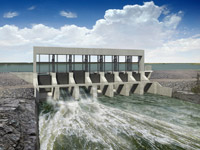 The Keeyask Hydro Power Limited Partnership (between Manitoba Hydro and four Manitoba First Nations) filed the Environmental Impact Statement (EIS) to seek a Manitoba Environment Act license for the proposed Keeyask Hydroelectric Dam July 6, 2012.
The Keeyask Hydro Power Limited Partnership (between Manitoba Hydro and four Manitoba First Nations) filed the Environmental Impact Statement (EIS) to seek a Manitoba Environment Act license for the proposed Keeyask Hydroelectric Dam July 6, 2012.The public has until September 20, 2012 to provide comments as announced by Manitoba Conservation and Water Stewardship Environmental Approvals Branch in the July 14, 2012 edition of the Winnipeg Free Press. The Keeyask Hydro Power Limited Partnership previously filed an Environment Act Proposal Form (EAPF) and a "Scoping Document for the Environmental Assessment of the Keeyask Generation Project" with Manitoba Conservation Environmental Approvals Branch December 9, 2011. Manitoba Wildlands provided comments on February 3, 2012. The application for an interim Water Power Act license for the Keeyask dam was filed February 8, 2012. The public has until August 31, 2012 to provide comments to Manitoba Conservation and Water Stewardship Water Use Licensing Section as also announced in the July 14, 2012 Winnipeg Free Press. Modern dams in Manitoba require at least three licenses. Two licenses from the Manitoba government: a Water Power Act license, and an Environment Act License. The Wuskwatim generating station, which was started in 2006 and is nearing completion, was the first hydroelectric dam in Manitoba required to obtain an Environment Act license. All previous dams in Manitoba were only required to obtain Water Power Act licenses. Many dams in Manitoba still only operate with interim Water Power Act licenses. The Keeyask Dam will also require a federal license under the Canadian Environmental Assessment Act (CEAA). A project description for the Keeyask Generating Station was submitted to the Canadian Environmental Assessment Agency August 31, 2011. Environmental Impact Statement Guidelines were finalized May 29, 2012. The Agency determined that a comprehensive study for review under (CEAA) was required. Also, because the comprehensive study was underway before Canadian Environmental Assessment Act, 2012 (part of the Canadian 2012 Omnibus Budget Bill) came into force, the former Act will apply. Export of any energy from the Keeyask dam would also require a permit from the National Energy Board. View July 14, 2012 Winnipeg Free Press Advertisements (PDF)View July 2012 Keeyask Environmental Impact Statement View Manitoba Conservation Online Registry Manitoba Hydro - Keeyask Generation Project View Manitoba Conservation Keeyask Generating Station page View Canadian Environmental Assessment Agency, Online Registry reference number 11-03-64144 View March 9, 2012 Manitoba Wildlands news item View December 16, 2011 Manitoba Wildlands news item View Manitoba Wildlands February 3, 2012 comments to Manitoba Conservation on draft Keeyask Scoping Document (PDF) View Manitoba Wildlands January 31 comments to Canadian Environmental Assessment Agency on Keeyask Background Information Document (PDF) Source: Manitoba Conservation & Water Stewardship, Canadian Environmental Assessment Agency
 Manitoba Wildlands has responded to the Canadian Environment Assessment Agency's ( CEAA) Background Document for the proposal to build the Keeyask generation station in northern Manitoba on the Nelson River. The comments provided are intended to support the joint environmental assessment to be conducted by Manitoba and Canada for this project. Effects assessment or environmental impact statement (EIS) guidelines will follow, issued by Manitoba Conservation so that there is an opportunity for public review.
Manitoba Wildlands has responded to the Canadian Environment Assessment Agency's ( CEAA) Background Document for the proposal to build the Keeyask generation station in northern Manitoba on the Nelson River. The comments provided are intended to support the joint environmental assessment to be conducted by Manitoba and Canada for this project. Effects assessment or environmental impact statement (EIS) guidelines will follow, issued by Manitoba Conservation so that there is an opportunity for public review.
Manitoba also responded to the Manitoba Hydro Hydro Scoping Document about the Keeyask generation station. The Scoping Document comes before setting of EIS guidelines, and filing of the EIS, both for public review.
Priorities in the comments filed by Manitoba Wildlands for this first stage of planning and environmental reviews for the Keeyask project include: need for clarity as to project area overall, and areas for environment components; the number of current and intended projects relevant to this project; access to technical reports; clarity on public open houses and consultations; need to incorporate the standards, and at least meet: recommendations and licensing conditions for the Wuskwatim generation station – which is currently being built in northern Manitoba. The federal and provincial environmental effects assessments and licensing process for the next Manitoba next dam have begun. The Keeyask Generation Project, a 695-megawatt dam, would be located on the Nelson River near Gillam, Manitoba. The proponent, Keeyask Hydro Power Limited Partnership, (a partnership between Manitoba Hydro and four Manitoba First Nations), submitted a project description for the Keeyask Generating Station to Canadian Environmental Assessment Agency (The Agency) for review under the Canadian Environmental Assessment Act (CEAA) August 31, 2011. A CEAA environmental assessment is required because approvals are likely required under Canada Fisheries Act and Navigable Waters Protection Act, or other federal laws. The Agency determined that a comprehensive study, which commenced November 29, 2011, was required and made available funding under its Participant Funding Program available. A Manitoba Environment Act license would also be required. The proponents filed an Environment Act Proposal Form (EAPF) and a "Scoping Document for the Environmental Assessment of the Keeyask Generation Project" with Manitoba Conservation Environmental Assessment and Licensing Branch (EALB) December 9, 2011. Public comments can be filed until January 31, 2012. The scoping document helps develop guidelines for an environmental assessment of the proposed Keeyask Generation Project. The guidelines will establish the scope of the Project and the assessment, including factors to be considered in the assessment. The scoping document is only the first step in the process of Manitoba Environment Act licensing. After scoping guidelines are final, the proponents file an EIS with the EALB. The EIS then undergoes public review. When the EIS review is completed, including any refilling or updating of the EIS, a referral to Manitoba's Clean Environment Commission (CEC) for public hearings is expected. It is not yet clear how a joint federal / provincial review or panel or hearings will be undertaken. View December 15, 2011 Canadian Environmental Assessment Agency press releaseView Manitoba Conservation, Online Registry #5550 Manitoba Hydro - Keeyask Generation Project View Canadian Environmental Assessment Agency, Online Registry reference number 11-03-64144 View Manitoba Hydro Keeyask Generating Station page View Energy Manitoba Keeyask (Gull) Hydro Projects page Source: CEAA, Manitoba Conservation
The proposed site for the Keeyask Generating Station is located on the Nelson River, approximately 60 kilometers from Split Lake with an in-service date of 2017, under the current schedule. Keeyask is a smaller and faster dam to build than Conawapa. In June 2008, the Joint Keeyask Development Agreement (JKDA) was ratified by Tataskweyak Cree Nation, War Lake First Nation, Fox Lake Cree Nation, and York Factory First Nation. Each community also agreed on Adverse Effect Agreements. In 2009, a ceremony was held in Split Lake to mark the official signing of the JKDA and outlined the partnership arrangements for the First Nation's participation. The Keeyask Cree Nations collectively have the right to own up to 25 percent of the partnership, with 75 percent remaining with Manitoba Hydro. A comprehensive environmental impact assessment will be required to determine potential effects on the environment and people, mitigation develop follow-up monitoring programs. Studies of the existing environment, socio-economic and heritage resources started in 2007. Public involvement will be conducted in three rounds of consultation before the process is complete. Currently at Round 1 of the Public Involvement Program, this stage includes project description and issue identification.
View Joint Keeyask Development Agreement  Download July 2008 Joint Keeyask Development Agreement (PDF) Download July 2008 Joint Keeyask Development Agreement (PDF) Download July 30, 2008 Keeyask Confidentiality Agreement (PDF) Download July 30, 2008 Keeyask Confidentiality Agreement (PDF)Planning, Studies, Environmental Licensing and Regulatory Process
The EIS would be publicly available and submitted for review and approval under the Manitoba Environment Act and the Canadian Environmental Assessment Act (as well as other provincial and federal legislation where permits or licences are required for construction and operation). As of May 2008, studies have focused on:
Visit Manitoba Hydro's webpage regarding Joint Keeyask Development Agreement Manitoba Hydro expects public hearings will be held during environmental and regulatory review processes. Associated Transmission Infrastructure Aboriginal Partnerships In May 2001, TCN and War Lake First Nation signed a Memorandum of Cooperation and Understanding, which created the Cree Nation Partners (CNP). The purpose of CNP is to work together as partners to negotiate all matters with Manitoba Hydro related to Keeyask. In October 2002, the four First Nations signed an agreement with Manitoba Hydro called the "Keeyask Negotiating Principles and Process", which outlines how negotiations will proceed. There are five contracts to be negotiated as part of the JKDA:
 Download October 2000 AIP between Manitoba Hydro and Tataskweyak Cree Nation (TCN) (Split Lake Cree First Nation) regarding the (Gull) Keeyask Generating Station (PDF) Download October 2000 AIP between Manitoba Hydro and Tataskweyak Cree Nation (TCN) (Split Lake Cree First Nation) regarding the (Gull) Keeyask Generating Station (PDF)View July 9, 2003 Manitoba Hydro News Release View Tataskweyak Cree Nation website on the Keeyask Generating Station View Wuskwatim & Keeyask Training Consortium Inc. website According to Manitoba Hydro's May 2008 Project Newsletter, As part of negotiating the JKDA, each participating First Nation - Tataskweyak Cree Nation, War Lake First Nation, Fox Lake Cree Nation and York Factory First Nation - is negotiating a separate Adverse Effects Agreement that will bind the Keeyask Limited Partnership. The purpose of the Adverse Effects Agreements, with certain exceptions, is to fully address all past and future Keeyask adverse effects on the Keeyask Cree Nations and their members which arise from the development and operation of the Keeyask Project and are foreseeable with the exercise of due diligence as of the date of the signing. If all four First Nations sign the JKDA, and each First Nation maximizes its ownership in Keeyask, ownership would be as follows: Manitoba Hydro: 75%; TCN: 13%; War Lake First Nation: 2%; Fox Lake Cree Nation: 5%; York Factory First Nation: 5%. Public Involvement View Manitoba Hydro's webpage for Keeyask's Environmental Assessment Public Involvement Program Open houses were held in June 2008 in Gillam, Thompson, Winnipeg and Brandon as part of Round One of the public involvement program. Manitoba Hydro envisions two additional rounds of public involvement. See page 7 of the May 2008 Keeyask Generation Project Newsletter - Round One (PDF) for more information. Separate formal consultations arising from the duty to consult with Aboriginal communities under Section 35 of the Constitution will also be required in order for the Keeyask project to proceed. 2008 Workshop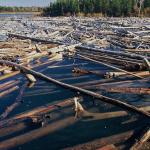 Manitoba Wildlands attended an invitational workshop regarding the Keeyask hydro generation projects held in Winnipeg, November 2008.
Manitoba Wildlands attended an invitational workshop regarding the Keeyask hydro generation projects held in Winnipeg, November 2008.
The questions below were asked in the workshop - with some additions for web site audiences. Participants included Councilors and members from four affected First Nations. Several of the community participants indicated that the questions asked by Manitoba Wildlands were also being asked by the communities in negotiations with Manitoba Hydro.
|
 2002-2014
2002-2014



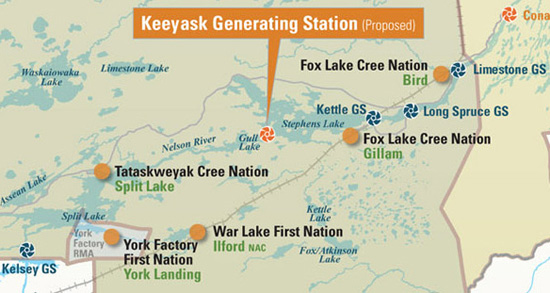
 No decision has been made to proceed with the project and Manitoba Hydro has not yet filed a proposal under Manitoba's Environment Act to seek regulatory review and approval for the Keeyask project. As part of the preliminary planning for Keeyask, Manitoba Hydro will be undertaking environmental impact assessment (EIA) studies, the results of which will be compiled in an environmental impact statement (EIS). Manitoba Hydro has been working with affected Cree Nations since 2001 to collect information that will be part of the EIA.
No decision has been made to proceed with the project and Manitoba Hydro has not yet filed a proposal under Manitoba's Environment Act to seek regulatory review and approval for the Keeyask project. As part of the preliminary planning for Keeyask, Manitoba Hydro will be undertaking environmental impact assessment (EIA) studies, the results of which will be compiled in an environmental impact statement (EIS). Manitoba Hydro has been working with affected Cree Nations since 2001 to collect information that will be part of the EIA. 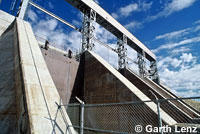 In November 2002, Manitoba Hydro provided the First Nations with a document entitled "Manitoba Hydro's Preferred Arrangements for the Development of the Keeyask Project". It was presented as an opening position, which could be negotiated.
In November 2002, Manitoba Hydro provided the First Nations with a document entitled "Manitoba Hydro's Preferred Arrangements for the Development of the Keeyask Project". It was presented as an opening position, which could be negotiated.  (PDF)
(PDF)